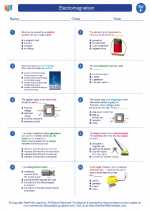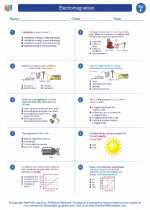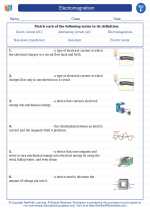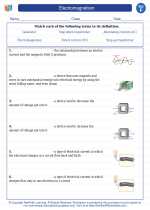Magnetic
Magnetism is a force that acts at a distance and is caused by the movement of electric charges. Magnets are objects that produce a magnetic field, which is a region of space where the magnet's force can be detected. The study of magnets and magnetic fields falls under the branch of physics known as electromagnetism.
Types of Magnets
There are several types of magnets, including:
- Permanent Magnets: These magnets retain their magnetism once magnetized and are commonly made of materials such as iron, nickel, and cobalt.
- Temporary Magnets: These magnets become temporarily magnetized when placed in a magnetic field but lose their magnetism when the field is removed.
- Electromagnets: These are magnets created by running an electric current through a coil of wire. They can be turned on and off by controlling the flow of electricity.
Magnetic Fields
Magnetic fields are the areas around a magnet where its force can be detected. The strength of a magnetic field is strongest close to the magnet and decreases as you move away from it. The direction of a magnetic field is from the north pole of the magnet to the south pole outside the magnet, and from the south pole to the north pole inside the magnet.
Magnetic Materials
Not all materials are affected by magnets. Materials that are attracted to magnets are known as ferromagnetic materials. Some examples of ferromagnetic materials include iron, nickel, and cobalt.
Uses of Magnets
Magnets have a wide range of practical applications, including:
- Use in electric motors and generators
- Creation of magnetic compasses for navigation
- Use in magnetic resonance imaging (MRI) machines for medical diagnosis
- Storage of data in hard drives and magnetic tapes
- Separation of materials in recycling facilities using magnetic separators
Study Guide
When studying the topic of magnetism, it's important to understand the following key concepts:
- How magnets produce a magnetic field
- The properties of magnetic fields and their strength
- The types of magnets and their characteristics
- The behavior of magnetic materials and their interactions with magnets
- Real-life applications of magnets and magnetic fields
Additionally, conducting hands-on experiments and demonstrations with magnets can help reinforce understanding of magnetism and its principles.
[Magnetic] Related Worksheets and Study Guides:
.◂Science Worksheets and Study Guides Sixth Grade. Electromagnetism

 Activity Lesson
Activity Lesson
 Worksheet/Answer key
Worksheet/Answer key
 Worksheet/Answer key
Worksheet/Answer key
 Worksheet/Answer key
Worksheet/Answer key
 Vocabulary/Answer key
Vocabulary/Answer key
 Vocabulary/Answer key
Vocabulary/Answer key
